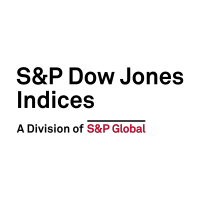Tag Archives: quality
Balancing Defense with Growth (Part II): The S&P Quality Developed Ex-U.S. LargeMidCap
As investments in artificial intelligence continue to boom, major indices in the U.S., Europe and Japan have hit all-time highs. In our previous blog, we reviewed how the S&P U.S. Quality Indices outperformed their corresponding benchmarks over both the short and the long term. Similarly, a quality premium also exists in developed ex-U.S. equity markets….
- Categories Factors
- Other Tags
Financial Planning Using Indices: From Taxes to Factors
How are advisors putting SPIVA data and factors to work as they build long-term plans to help clients achieve objectives? Delta Wealth Advisors’ Dino Efthimiou and Niko Finnigan join S&P DJI’s Brent Kopp for a practical look at the importance of tax management and the role of indexing in building a comprehensive plan for clients….
- Categories Factors
- Other Tags
Investigating the Premium Available to Factor Returns via a Focus on Sustainability
Factor indices aim to provide investors the means to access factor exposure in a cost-effective and transparent way. S&P DJI offers sustainability versions of factor indices that incorporate environmental, social and governance (ESG) scores, which allow investors to align their investments with their interests while seeking to improve risk/return dynamics. Launched in 2021, our suite…
- Categories Factors
- Other Tags
Why Do Dividends Matter?
Income generation may be sought out by a variety of market participants, including those nearing retirement and those seeking a source of passive income. S&P DJI’s Jason Ye takes us inside the Dow Jones U.S. Dividend 100 Index for a look at yield beyond fixed income.
- Categories Factors
- Other Tags
Why Multi-Factor Indices in South Africa?
Burton Malkiel, author of the book A Random Walk Down Wall Street, asserted, “The facts suggest that successful market timing is extraordinarily difficult to achieve.”1 Multi-factor indices may be a way of ensuring you are “in the right place at the right time,” participating throughout market cycles without compromising timing or returns. The S&P DJI…
- Categories Factors
- Other Tags
Balancing Defense with Growth: The S&P Quality Indices
Thus far this year, about two-thirds of the S&P 500®’s rally has been driven by growth stocks and the so-called “Magnificent Seven” tech stocks. While the quality factor is traditionally viewed as defensive, it has kept pace with the market while many other factor strategies have underperformed (see Exhibit 1). Part of the reason for…
- Categories Factors
- Other Tags
Comparing Defensive Factors in the Recent Market Environment
On Sept. 17, 2020, S&P DJI’s Indexology blog shared a post I wrote titled “Comparing Defensive Factors During the Last 3 Bear Markets.” This blog is a continuation of that study, examining the results of the same factors during the 18-month period around the 2022 market correction that led the S&P 500® officially into bear…
- Categories Factors
- Other Tags
Introducing the S&P SmallCap 600 QVML Top 90% Multi-Factor Index
For market participants seeking to measure small-cap, multi-factor equity premia with greater diversification and historically lower tracking error (TE), S&P DJI has recently launched the S&P SmallCap 600® Quality, Value, Momentum and Low Volatility (QVML) Top 90% Multi-Factor Index. In this blog, we will examine the index construction methodology, historic performance, sector composition and factor…
- Categories Factors
- Other Tags
The Dow Jones Dividend 100 Indices Part 2: Strong Fundamentals and the Benefits of Diversification
In part one of this series, we highlighted how the stringent dividend sustainability and quality screens of the Dow Jones U.S. Dividend 100 Index and Dow Jones International Dividend 100 Index may have led to their outperformance in 2022 and other inflationary periods. In this installment, we will analyze the positive effects that these screens…
- Categories Factors
- Other Tags
The Dow Jones Dividend 100 Indices Part 1: A Focus on Dividend Sustainability and Quality
Looking back, 2022 was an impressive year for passive dividend indices, both with respect to performance and inflows on the back of rising interest rates. The Dow Jones U.S. Dividend 100 Index and Dow Jones International Dividend 100 Index were two of the standout performers, which may be due to their emphasis on strong fundamentals…
- Categories Factors
- Other Tags













































